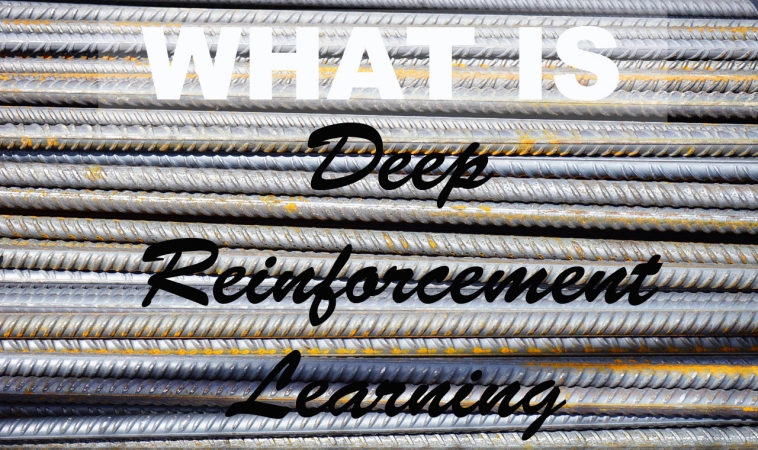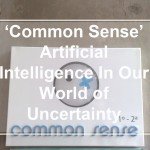
What is Deep Reinforcement Learning?
These days, there are a lot of technological innovations that have the capacity to change the world that we live in. One of such innovations is deep learning. Deep learning or machine learning is the ability of computers to assimilate large amounts of information independently, without any human interference or influence. This information can be used to achieve a vast number of things. Such technology has ramifications in fields of finance, health, insurance and lots of others.
When it comes to technology, information is everything. The world around us is filled with information on so many things, and technology makes use of this information to solve the tasks that we humans find bulky or tasking. For example, health science and technology has began the use of iBeacon technology that has the ability to collate information on a patient relating to the individual’s lifestyle. This information can then be used to push the individual to make even healthier lifestyle choices. However, there are even more possibilities that we stand to gain from this and this leads us to deep reinforcement learning.


What is deep reinforcement learning?
There are different branches of machine learning. These branches include supervised learning, unsupervised learning and reinforcement learning. In this post, we will be taking a deeper understanding of reinforcement learning and how it applies to the world around us.
All the beings on this planet (animal or human) have the ability to exhibit a form of behavior. They often react based on the influences of the environment around them. This means that often times, what you put in is what you get out. When a new animal or individual is introduced to a new environment, such an area has the ability to change the way the being operates. This process is often termed as learning.
Machine learning is all about the process of studying and learning algorithms. It studies how the learner’s behavior is affected and depends on what is received and the feedback generated from the environment. In order to gain a thorough understanding of reinforcement learning, we need to first ensure that supervised and unsupervised learning are properly understood, as this would build the foundations of our understanding of the subject matter.
In the case of supervised learning, the learner is told what its response should be. This guided process brings an understanding of the environment at hand. Therefore, when the environment feeds the learner an input, it compares its response to what its target should be (what it is told to respond), and makes the necessary efforts to bring about a form of similarity. The best way to explain this is by using an analogy of a musical class. For example, if you are being taught to recognize the sounds produced by musical instruments, the teacher is most likely going to give a description of what it should sound like (the target), and therefore you can always use this parameter as a comparison to the correct sound that you are targeting.
The next case is unsupervised learning. Here the learner is receiving no form of feedback at all from the environment. In this case there is no ‘target’. However, the job of the learner in this case is to represent the inputs that it is supplied with in a way that is more efficient.
Since we have understood the concepts of supervised and unsupervised learning, we can now jump into the subject of reinforcement learning.
This method of learning is a lot closer to the supervised learning system than unsupervised. In this situation, the learner is going to be receiving a form of feedback concerning how appropriate its response is. This is therefore a form of ‘reinforcement’. The concept or reinforcement learning therefore has a lot of similarities to supervised learning. This is because in both supervised and reinforcement, the learner is provided with feedback on whether what it responded with is the appropriate response.


What then is the difference between reinforcement and supervised learning?
The major difference between these two systems of machine learning lie when the learner produces an error. When the learner’s behavior is deemed inappropriate, both systems have different ways of attending to this. Supervised learning would go one step further to let the learner know what it should have done, and what the correct response should have been. In the case of reinforcement learning, the learner is merely told that its response was inappropriate, and in a lot of cases, it would give information on how wrong the information is.
This situation can be likened to that of a teacher in school. One type of teacher may see students make mistakes and provide the right answers, so they know what the appropriate responses should be. On the other hand, another type of teacher may merely tell the student that he or she is wrong and challenge them to go one step further and try to solve the problem again.
It is very important to note that for the purpose of explanation, these concepts were represented in the most simplistic form. In reality, these concepts revolve around highly complex computer systems that work at much quicker rates.








From some point on, I am preparing to build my site while browsing various sites. It is now somewhat completed. If you are interested, please come to play with baccarat online !!
I was looking for another article by chance and found your article totosite I am writing on this topic, so I think it will help a lot. I leave my blog address below. Please visit once.
You wasted the whole spacebar clicker day” makes an evaluation.
This is an excellent post I seen thanks to share it. It is really what I wanted to see hope in future you will continue for sharing such a excellent post. fnaf 1 unblocked